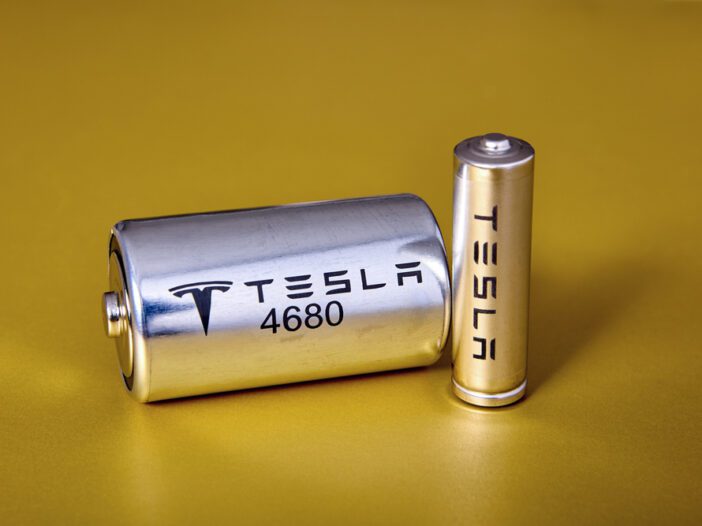JB Straubel is a name you’ve probably never heard before. In the early 2000s, this quiet engineer was one of the five Tesla co-founders and operated as the company’s chief technical officer for more than 15 years.
If you buy an electric car over the coming years, whether it’s a Tesla or Toyota, it was Straubel’s ingenuity that led you there.
He’s the Henry Ford of electric vehicles (EVs), yet he’s virtually unheard of outside engineering circles.
Described as the ‘good guy’ by employees, he reined in much of Elon Musk’s sporadic decision-making and provided a buffer between Musk and senior Tesla employees.
In fact, most staff credit Straubel for leading the company’s innovation and design, which has paved the way for legitimising EVs as a genuine alternative to conventional cars.
A historical feat that is set to change the course of history in car design and manufacture.
Straubel managed the most critical aspects of the business at Tesla, which included everything from designing battery cells to developing the company’s first gigafactory manufacturing plants.
Straubel has also been acknowledged for overcoming one of Tesla’s major hurdles.
A problem that almost derailed the company from the outset. An issue that ridiculed the whole idea of EVs back in the early 2000s.
You see, cars powered by Li-ion batteries were akin to chemical ticking time bombs.
You’re probably familiar with the idea that lithium batteries are prone to explode from time to time. Heat being the main problem.
But Straubel and his team figured out a system in which to dissipate the excess heat, averting a major flaw in the technology of EV batteries.
It paved the way for bringing electric vehicles to the mainstream.
As chief engineer, he led the company through each and every step of the design and manufacture of the world’s first mass-produced commercially viable EVs. Straubel was the unsung hero of the green movement.
But it was his role in securing supply chains of raw materials that shaped his NEXT career move.
As the man in charge of securing the vast supplies of metal needed to build EVs, charging stations, and Li-ion batteries at Tesla, Straubel understood the challenge that lay ahead…lack of supply.
As a pioneer in EV technology, Straubel was in a unique position.
The lack of critical metals, including graphite, copper, lithium, cobalt, and rare earths (to name a few), meant Straubel understood the looming crisis for the fledgling EV industry well ahead of anyone else.
When Straubel went public with his observations in 2019, Elon Musk scoffed and gave his chief engineer little backing.
Yet this is set to become a crisis for Tesla and virtually every other tech and vehicle manufacturer over the coming years. In fact, it’s setting up to be the world’s Achilles heel in transitioning away from fossil fuels.
But it appears Musk is finally starting to register what Straubel warned him three years earlier.
The Tesla CEO is now making up for lost time as he scrambles across the globe, securing exclusive partnerships with major mining companies.
Just last year, he signed a deal with BHP to secure nickel from the company’s Nickel West project in Western Australia. He’s also made deals with various lithium miners in Australia and Canada.
But Musk is facing stiff competition from virtually every other major manufacturer. The world’s biggest brands are starting to wake up to the looming supply crisis.
His next move? From space rockets to Twitter, Musk is now looking at becoming a mine operator as he seeks to secure supplies of raw materials. You can read more about that from this Reuters article here.
The crisis is approaching, and here’s why…
300 gigafactories in the pipeline
As the world ramps up its capacity to build more EVs, existing mines will already be producing at full capacity.
A major pickup in exploration investment to drive a new generation of mine discovery has failed to manifest.
Meanwhile, Benchmark Mineral Intelligence reports that there are currently more than 300 battery gigafactories in the construction or planning stages worldwide. This represents a staggering 68% increase in just 12 months.
Manufacturing for new EVs and Li-ion batteries is increasing exponentially, but the availability of raw materials is as low as ever.
And it will be for some time yet.
As I’ve discussed previously, a failure to invest in exploration over the last decade means the world is continuing to rely on ageing mines with depleting reserves.
In my mind, many of these 300 battery gigafactories currently under construction are destined to sit idle for years, waiting for raw materials to arrive.
Through the coming crisis, it’s the countries extracting these metals, including Australia, Canada, China, Brazil, and South Africa, that will look to value add and build the factories internally…leaving many of the gigafactories (currently under construction) across Europe and the US empty.
The issue is so severe that JB Straubel actually packed his bags and left Tesla in mid-2019.
His primary focus is now on the supply chain of raw materials — trying to figure out a tangible solution that may bring the world a step closer to carbon neutrality beyond just wishing it into existence as most policymakers do.
In a snippet from Time magazine from May 2022, Straubel underlines the major problem ahead (emphasis added):
‘We need massive quantities of batteries to power a global energy transition and avert cataclysmic climate change. To produce them, we will need to mine more metals like lithium and cobalt than have been extracted in all of human history. U.S. companies have started planning huge new battery factories, but Straubel thinks we won’t have enough materials to supply them, not to mention that nearly all the world’s facilities to process those materials are in Asia, meaning they will have travel 10,000 miles before we can use them.’
You can read the full article here.
It was no secret that Straubel left Tesla in 2019 after he grew concerned about a widening gap between electric vehicle demand and the availability of materials needed to make them.
It’s why he founded a new company, Redwood Materials.
Redwood is a company focused on recycling the raw materials needed for manufacturing Li-ion batteries.
While I think this is a rational and sensible solution for someone that is not involved in the mining business, creating a circular supply chain is only achievable once you’ve set up the first-generation fleet of EVs and Li-ion batteries. For this, mining is the only option.
Redwood Materials plans to recycle early-generation Li-ion batteries manufactured 10–15 years ago…throw in some laptops and iPhones into the recycling mix. Straubel believes Redwood can supply one million electric cars by the year 2025.
But that falls well short of the 250 million conventional cars, SUVs, and light-duty trucks on the road in the US today.
Don’t get me wrong, recycling is the only long-term solution to sustain manufacturing into the future.
But to do so requires mining the vast raw materials to construct the initial round of global EVs.
Recycling doesn’t come anywhere near the vast quantity of raw materials needed to create the world’s entire fleet of first-generation EVs.
Unfortunately, neither does the current production of raw materials.
Should the world come anywhere close to meeting the West’s climate agenda, the mining sector will need an enormous ramping up.
Yet, the discovery of new deposits is at record lows, and existing mines are running lean on viable ore.
In my mind, the evidence is clear…the timelines of 2030 and 2050 for carbon neutrality are pipe-dream goals. There are insufficient raw materials available to make this happen.
Yet the world is set to blindly take on this challenge, regardless.
Space mining could be the answer…but the technology is MANY decades away before being able to make a meaningful dent in supply shortfalls.
Leaders have failed to account for the availability of raw materials in their green energy transition agenda.
They’ve assumed that the law of supply and demand coupled with the stroke of a pen would magically transition economies into carbon neutrality.
But as a finite resource, laws of supply and demand for critical metals are set to come undone.
Supply is very much limited.
For those of us with feet firmly planted on the ground, the investment opportunity is obvious…buy companies with advanced exploration projects or those just moving into production.
Your focus should be on critical metals.
That way, you can gain maximum upside alongside mining companies…just as governments and tech manufacturers try to bumble their way out of the impending energy transition nightmare that awaits us all.
Happy investing.
Regards,
|
|
James Cooper,
Editor, The Daily Reckoning Australia
PS: We hope you’ve been enjoying James Cooper’s content in The Daily Reckoning Australia. We’re excited to have him as part of our Fat Tail team as our resources expert. And speaking of the team, some of you have been asking about our property expert, Catherine Cashmore. We’re excited to announce that she has just launched a free property-focused e-letter, Catherine Cashmore’s Land Cycle Investor. If you’re at all interested in the property market, this is a must-read twice-weekly e-letter. Find out more by clicking here.


